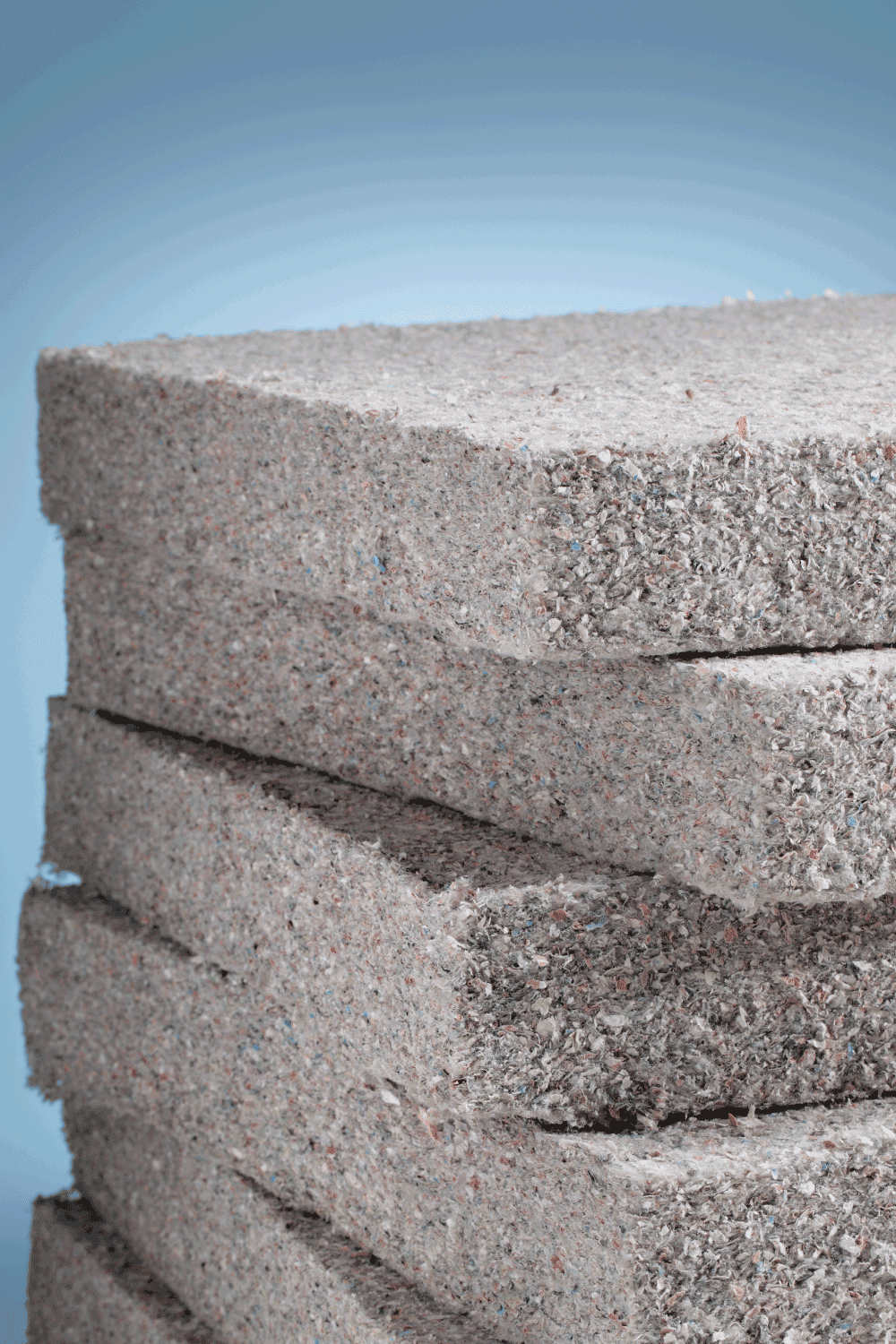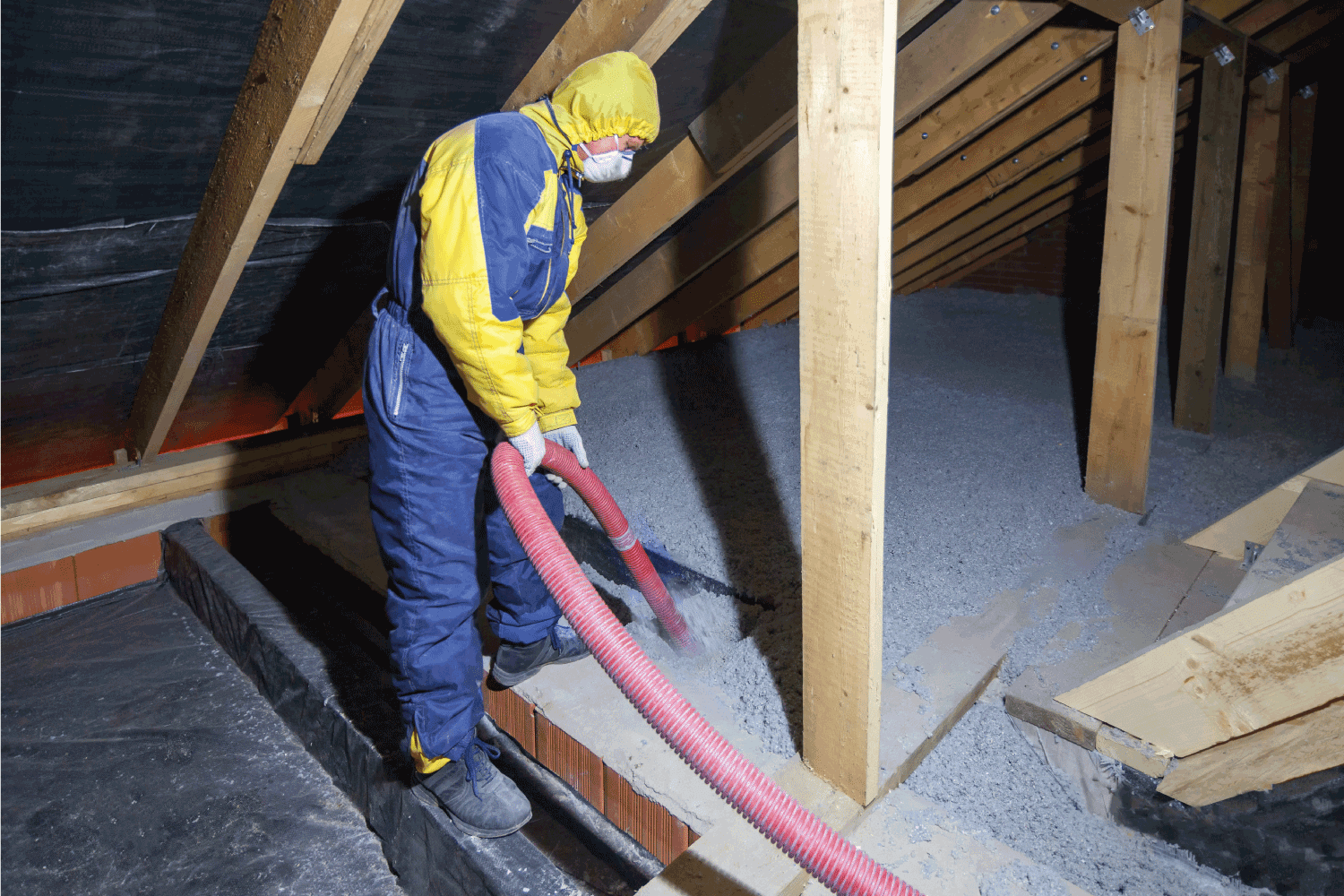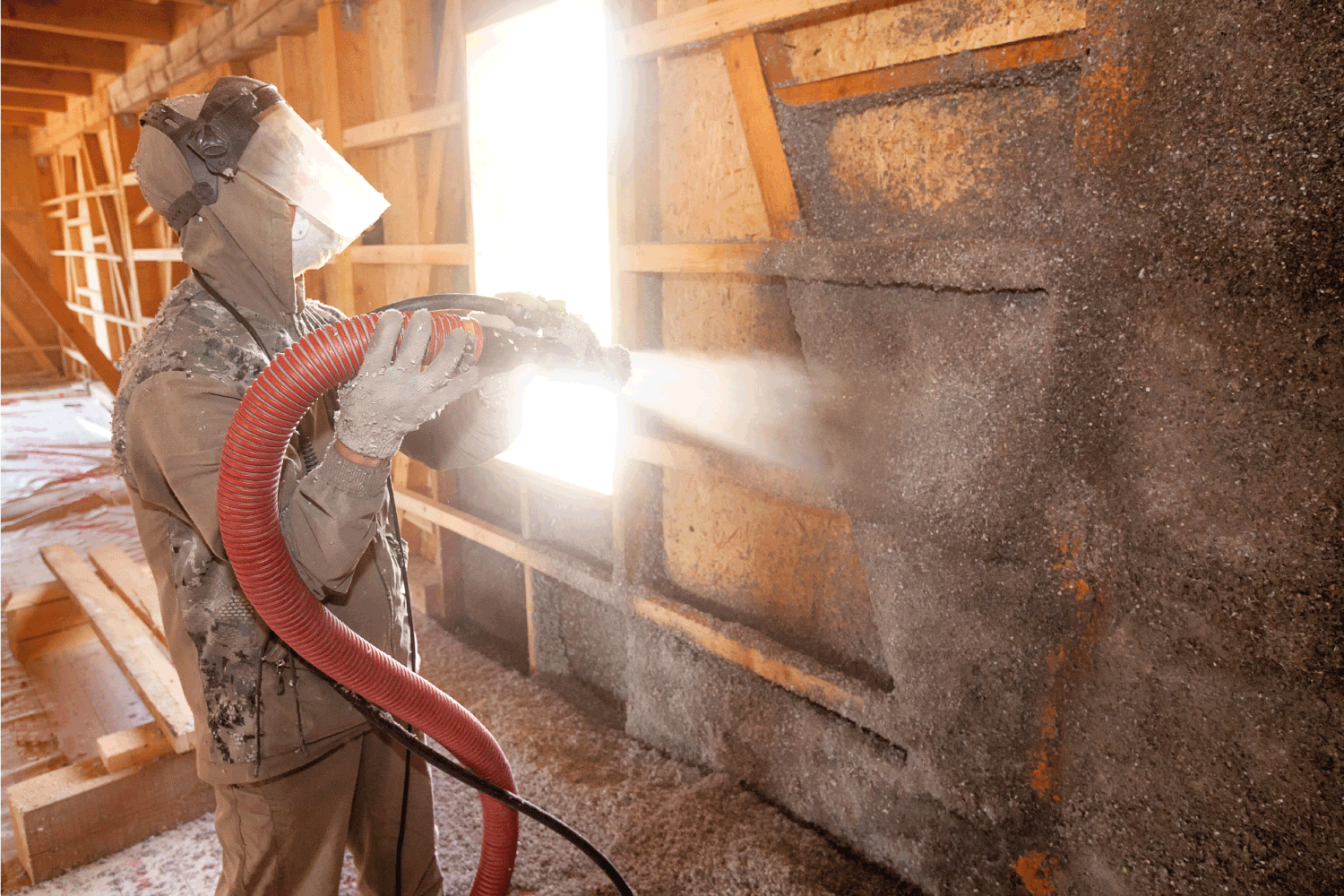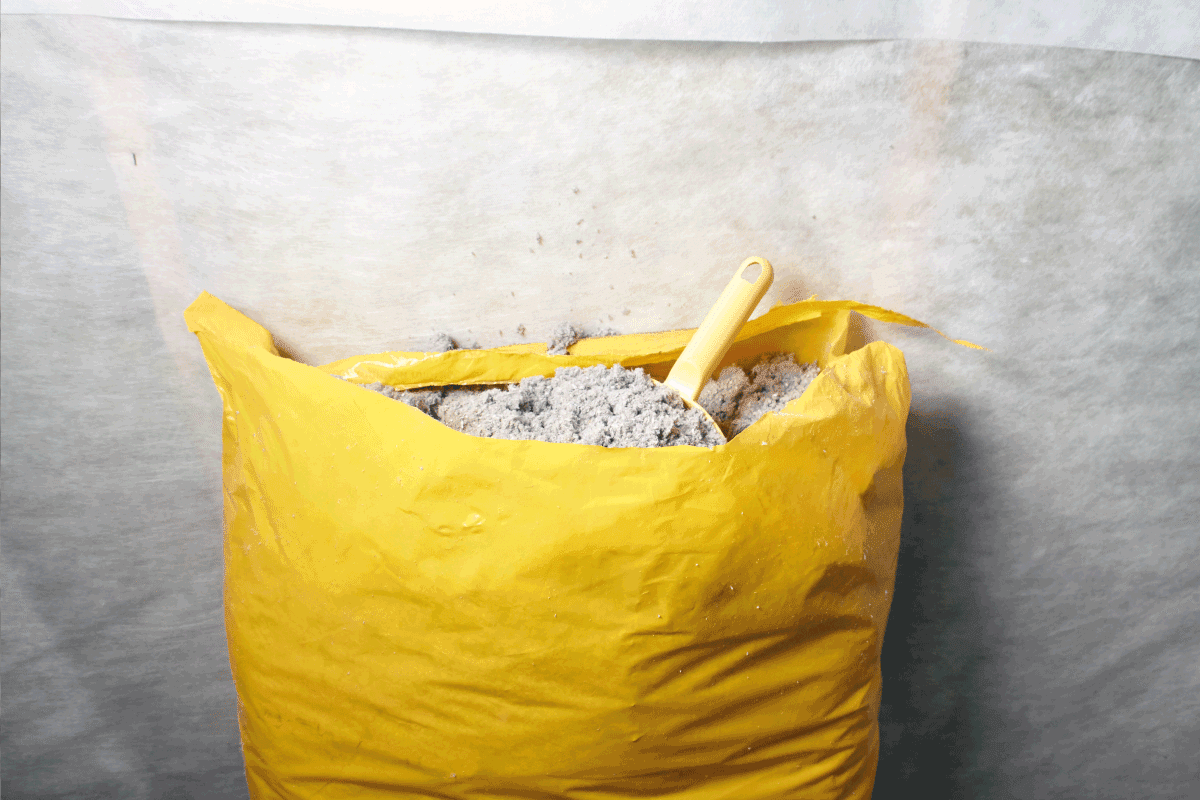You may be shopping for replacement insulation, looking to increase your existing insulation R-value, or perhaps are designing a new home. Whichever the case, you are wondering if cellulose insulation decomposes or deteriorates over time. In this post, we combine industry professional knowledge and up-to-date research to thoroughly answer your question.
Cellulose insulation will deteriorate and decompose over time. However, all insulations deteriorate as they age. In fact, and if kept dry, cellulose insulation can have a lifespan of well over 100 years. Cellulose insulation is comprised of recycled newspaper soaked in borate to give it long-term mold and rot resistance.
Keep reading the rest of this post for more details on cellulose insulation lifespan and cellulose insulation application. This guide will help you decide between cellulose and other insulation types common on the market today. To conclude, we answer a few related questions.

How long will cellulose insulation last?
The longevity of cellulose insulation varies based on which source you look at, from around 30 years to over 100 years. However, according to this article from the International Association of Certified Home Inspectors, cellulose insulation lasts 100+ years.

Does cellulose insulation decompose?
The longevity of any insulation type depends on the conditions the insulation is exposed to. Moisture damage is particularly harmful to cellulose insulation longevity.
Cellulose insulation is exposed to borate soak, designed to fight off rot, but not water-resistant. In fact, if the cellulose gets wet, it will begin to decompose very quickly. Further, wet cellulose insulation loses almost all of its insulative ability.

Does cellulose insulation deteriorate over time?
No, cellulose insulation will not automatically deteriorate over time. If kept dry and pest-free, this product will remain relatively inert for the life of your home.
Does cellulose insulation settle?
It is a common worry that cellulose insulation will settle over time which reduces the R-value. Fortunately, this worry is largely overblown.
While it is true that loose-fill and blown-in cellulose insulation settles, this small reduction in R-value is accounted for in the advertized R-value per installed inch. Dense pack cellulose insulation that is put into closed cavities does not settle over time.
Is cellulose insulation flammable?
It is a common worry that since cellulose insulation is made of paper, it will make your home more flammable. However, the borate soak makes it basically impossible to light cellulose insulation on fire. This means that an attic or walls with cellulose insulation will be less likely to flame up than home elements without cellulose insulation.
Advantages of cellulose insulation

Cellulose insulation is recycled, so it has the major advantage of coming with peace of mind. Further, this product does a better job of restricting airflow compared to fiberglass insulation. This advantage comes with a better R-value per inch than fiberglass and better sound protection.
Advantages of fiberglass insulation
Fiberglass insulation holds more insulative ability when wet and is more resistant to water damage over the long run. Further, some insulation contractors prefer to install fiberglass insulation.
Should I remove old cellulose insulation?
If the old cellulose insulation is dry and clean, there is no need to remove it. Even if old and poorly spread, the cellulose insulation will still contribute R-value to the home element in question,
However, if the cellulose is wet, you will need to remove it. Wet cellulose insulation can lead to mold and bacteria growth and can even start to damage the structure of your home.
In the same sense, if the old cellulose insulation is full of pest waste and/or dead bugs, it is probably a good idea to remove the old cellulose as an indoor air quality concern.
How do you remove old cellulose insulation?
Removing old cellulose insulation is a large job that generally takes at least two people. Here, we cover step by step how to accomplish this task for both attics and walls.
If you are unable to or unwilling to do this job yourself, call an insulation contractor. This choice comes with the advantage of knowing the job will be done right.
How to remove old cellulose insulation from an attic
To remove cellulose insulation from an attic, take the following steps.
1. Wear the proper personal protective equipment
Click here for a protective suit from Amazon.
Gloves, glasses, a respirator, and a Tyvek suit are all recommended safety precautions for this job. In fact, whenever you enter an attic or come in contact with insulation, these safety items are advised.
2. Aquire a Shop Vac
Click here for a shop vac from Amazon.
First, rent or purchase a high-powered shop vacuum. For this to reach all the corners of your attic, you will probably need either a long hose or a long extension cord. It is easiest to use a long hose that reaches all corners of your attic while an assistant manages the vacuum outside the attic.
3. Plan for Insulation Collection
Click here for heavy-duty garbage bags from Amazon.
Place industrial trash bags in the vacuum container. As you suck up insulation, eventually, you will fill up the bag. When the bag is full, your assistant will turn off the vacuum, remove and seal the bag, and replace it with a fresh bag. Then they will turn the vacuum back on.
4. Suck up attic cellulose
While in the attic, suck up all the insulation you can reach from a single stance, pausing whenever your assistant turns off the vacuum.
5. Carefully clean all insulation from the attic
Continue moving and sucking, being careful to only step on structural components until all of the insulation is bagged outside.
How to remove old cellulose insulation from walls or other closed cavities
To remove cellulose insulation from walls or other closed cavities follow these steps.
1. Use the same vacuum, bagging system, and personal protective equipment from above
The vacuum and bagging system is the same for closed cavities as for the attic directions laid out in the attic cellulose removal section above.
2. Find and mark wall studs
Click here for a stud finder from Amazon.
To reach the insulation in a wall cavity, you will need to cut a hole in the wall. First, find and mark all of the studs with a stud finder.
3. Cut holes in the center of the stud bay
Click here for a 2 1/8" hole saw from Amazon.
Now, use a hole saw to cut holes near the top of the stud run in the center of the stud bay. You will need to cut holes under and over windows. For this, you want a hole that is just large enough to slip the vacuum hose into. Save the rounds from the hole saw to patch with later.
4. Suck insulation out of the wall or closed cavity
Now, and after donning your personal protective equipment, start to suck the insulation out of the walls. As you get down the wall cavity, you will need to slowly and carefully let the hose down. You will be able to tell when it is sucking insulation and when it is not.
5. Add new insulation
Usually, it is only worth removing old insulation if you are going to replace it with new. So once all the old insulation is gone, you can replace it with new insulation using the holes you have already drilled.
6. Patch holes
Once you have completed all work in the walls, patch the walls using caulk with the rounds from the hole saw, then paint to match.
Can cellulose insulation be composted?
While you can compost cellulose insulation, this is not advisable in an at-home compost. The treatments that cellulose insulation undergoes make it potentially harmful to the biome that makes home composts thrive. Further, this could hurt any gardens you eventually put the compost on.
However, suppose you have an out-of-the-way place where you can let old cellulose insulation rot. In that case, it will likely decompose relatively quickly without leaving any long-term negative side effects.
What insulation lasts the longest?
Fortunately, almost all insulations are advertised to last the lifetime of your home. However, fiberglass and spray foam insulation lasts the longest under adverse conditions such as water damage. Further, if any insulation is exposed to direct sunlight, this will negatively impact the lifespan of that product.

In Closing
In this post, we answered the question of whether cellulose insulation decomposes and deteriorates over time. We include a full guide to the advantages and disadvantages of this product. We also cover how to remove old cellulose insulation. To conclude, we answer a few related questions. Good luck!
Read these great HVAC Seer articles to learn more about cellulose and other types of insulation:





